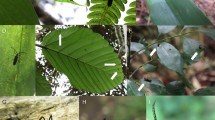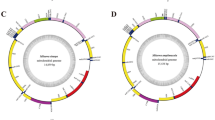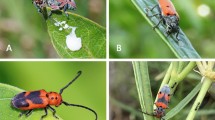Abstract
The unpalatable and warning-patterned butterflies Heliconius erato and Heliconius melpomene provide the best studied example of mutualistic Müllerian mimicry, thought – but rarely demonstrated – to promote coevolution. Some of the strongest available evidence for coevolution comes from phylogenetic codivergence, the parallel divergence of ecologically associated lineages. Early evolutionary reconstructions suggested codivergence between mimetic populations of H. erato and H. melpomene, and this was initially hailed as the most striking known case of coevolution. However, subsequent molecular phylogenetic analyses found discrepancies in phylogenetic branching patterns and timing (topological and temporal incongruence) that argued against codivergence. We present the first explicit cophylogenetic test of codivergence between mimetic populations of H. erato and H. melpomene, and re-examine the timing of these radiations. We find statistically significant topological congruence between multilocus coalescent population phylogenies of H. erato and H. melpomene, supporting repeated codivergence of mimetic populations. Divergence time estimates, based on a Bayesian coalescent model, suggest that the evolutionary radiations of H. erato and H. melpomene occurred over the same time period, and are compatible with a series of temporally congruent codivergence events. This evidence supports a history of reciprocal coevolution between Müllerian co-mimics characterised by phylogenetic codivergence and parallel phenotypic change.
Similar content being viewed by others
Article PDF
Author information
Authors and Affiliations
Corresponding author
Rights and permissions
About this article
Cite this article
Hoyal Cuthill, J., Charleston, M. Phylogenetic Codivergence Supports Coevolution of Mimetic Heliconius Butterflies. Nat Prec (2012). https://doi.org/10.1038/npre.2012.6829.1
Received:
Accepted:
Published:
DOI: https://doi.org/10.1038/npre.2012.6829.1



